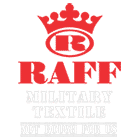Since the birth of human civilization, it is thought that individuals have used camouflage in some form or another. Indeed, camouflage is an idea that predates humans for thousands of years. It derives from the innate qualities of animals that enable them to blend in with their surroundings. Almost every country’s military activities have relied heavily on camouflage over the last century. The soldiers used camouflage to conceal themselves and their equipment from enemy forces.
Camouflage made enormous strides during the First World War in terms of hiding and protection, as well as a means of deception without really killing. As a result of this plan, numerous artists were able to put their talents to work in the service of their country.
Lucien Victor Guirand de Scévola (1871-1950) and Louis Guinot (1871-1950) were French painters who served in the 6th Artillery Regiment and were credited with inventing camouflage (1864-1948). As early as August 1914, they began concealing their weapons beneath branches and canvases painted in colors that matched their natural surroundings in order to escape detection by the enemy. They required artillerymen to wear earth-toned jackets to blend in with the surrounding landscape. As a result, their new coats concealed their blue tunics and slacks.
Following the studies and demonstrations carried out by a small group of artists, the minister of war was convinced of the technique’s efficiency and on August 14, 1915, the Camouflage Section was officially launched. Jacques Scévola (1852-1931) was assigned commander-in-chief; Jean-Louis Forain (1852-1931) was assigned, inspector general. Permission was granted for the unit to utilize workshop facilities in order to build equipment requested from all over the Western Front. Participants included painters and sculptors from a variety of artistic disciplines. However, set painters and stage decorators skilled in trompe l’oeil painting, as well as cubist artists skilled in disassembling items to reveal their true shapes, were especially well-represented among the artists in attendance.
During his term as director of the Buttes-Chaumont workshop in Paris, Abel Truchet (1857-1918) mentored approximately 200 artists. The remaining workshops were distributed among the other army groups, including Amiens (which was renamed Chantilly in 1917), Châlons-sur-Marne, Nancy, and Epernay. Numerous secondary workshops were founded in Bergues, Noyon, Bar-le-Duc, Belfort, Soissons, and Epinal, among other locales. They required a large number of personnel to accomplish the project, including carpenters, sheet metal workers, mechanics, and plasterers.
Camouflage artists worked in small specialized teams that reconnoitered the terrain or objects to be disguised and oversaw the installation of camouflaged objects or devices. On artillery pieces and batteries, fittings and raffia netting were added. Observatories were established in sentry boxes known as “molehills,” which were constructed into the parapets of trenches, in armored replica trees (which were erected overnight in place of actual trees), and in fabricated extensions of authentic ruins. Periscopes were embedded in wooden posts or shrubbery. Roads, buildings, locks, railway tracks, and occasionally entire communities were concealed by canvases and hedges. Additionally, camouflage artists painted trompe l’oeil and erected phony locations, dummies, and a variety of lures. Additionally, they did not hesitate to relocate real landmarks in order to misdirect the adversary.
By applying irregular patterns to artillery pieces, railroad equipment, trucks, gunboats, and other machines, the true lines of the machines were disturbed, and the enemy was fooled as to their genuine composition. Camouflage was also deployed by the air force and navy to achieve this hiding goal. Both observation and combat planes were painted in less apparent hues than the rest to the inexperienced sight of an observer. It was customary to paint the hulls of ships in wide, mottled stripes of gradated hues and oblique lines, creating an optical illusion that misled the adversary into believing the ship was something different.
Additionally, the military of the United Kingdom, Belgium, Italy, the United States of America, and Germany built workshops and recruited teams of camouflage artists to work on their respective fronts. Physicists, engineers, chemical engineers, and architects all contributed significantly to the creation and effectiveness of deception tactics through their knowledge of the material structure and optical effects, as well as their understanding of light incidence and refraction. However, it was artists who contributed the most to camouflage’s success, through their inventiveness, their awareness of the intricacies of color, tone, and materials, and their ability to create on the spot or from memory.
In 1938, the RAF established a General Camouflage Policy with the objective of addressing the characteristic elements of an RAF station — buildings, landing fields, and boundaries – in a practical and cost-effective manner that would trick or confuse an enemy pilot. It was considered that the fundamental objective of airfield camouflage would be met if recognition of a target could be delayed, so avoiding or at the very least distorting an attack. Following World War II, the General Camouflage Policy remained in operation until 1944, when it was phased out.
